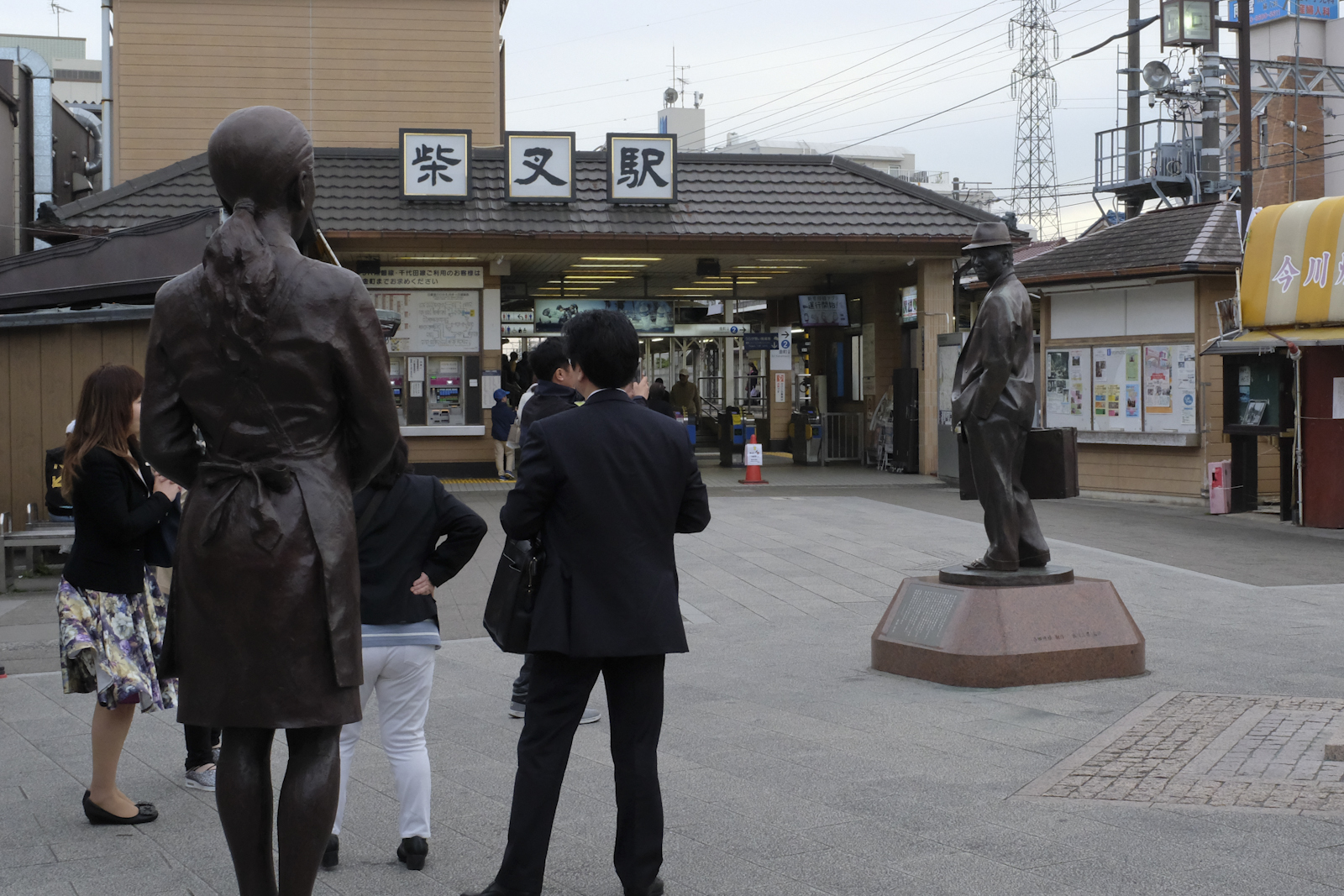
I want to tell you about an area of Tokyo I discovered on my last trip to Japan.
It may not be of interest to you on a first visit to this massive city. But if you’re a repeat visitor, you’ll want to check it out.
When most foreigners think of Tokyo, they think hyper-modern: nighttime scenes of flashing neon, electronic noise, giant screens and outlandish characters — a less dystopian version of Blade Runner.
Those who have lived there are more likely to temper such images with one where traditional meets modern and sometimes blends together. A Shinto shrine next to a futuristic skyscraper, or old ladies in kimono shuffling past outlandish youth fashion in a narrow street.
It’s one of those elements that makes Japan unique, a reverence for tradition blended with a hunger for the modern in a way that somehow eliminates the contradictions between them.
Go to Shibamata and you’ll leave most of that clash behind.
We took the train up there one warm summer day — or rather, a series of increasingly smaller trains through the centre of the city and out beyond Tokyo Skytree, to a world of fields and open spaces bisected by the gentle but relentless surge of the Edo River.
We were in the city during Golden Week, that string of connected national holidays that prompt anyone who can go abroad to jet off on vacation, and anyone who doesn’t have to work in the city to leave it. Options were limited, and we needed a breath of air.

The first sight that greets you when you step off the train is a statue of a man with a hat. He’s holding a suitcase that has clearly seen some miles, and looking over his shoulder as he walks away.
This is Tora-san, and he’s the reason just about every Japanese person has heard of Shibamata.
Tora-san is the main character in the longest movie series ever made. He’s a cross between a traveling salesman and a tramp. A bumbling man with a big mouth and a kind heart, he never fails to put his foot in it, but somehow things always come out right. In each instalment of the series, Tora-san is traveling around Japan, but he always returns to his little sister and his aunt and uncle in Shibamata, his hometown.
The dialogue is fast-paced, and some of the humour gets lost in the translated subtitles, but you will still enjoy his antics. Check out the first film in the series, Otoko wa tsurai yo (which translates as something like, “It’s tough being a man”).
A total of 48 Tora-san movies were shot over a 26 year period (1969 – 1995), and Japanese people still come to Shibamata to see locations from the films.
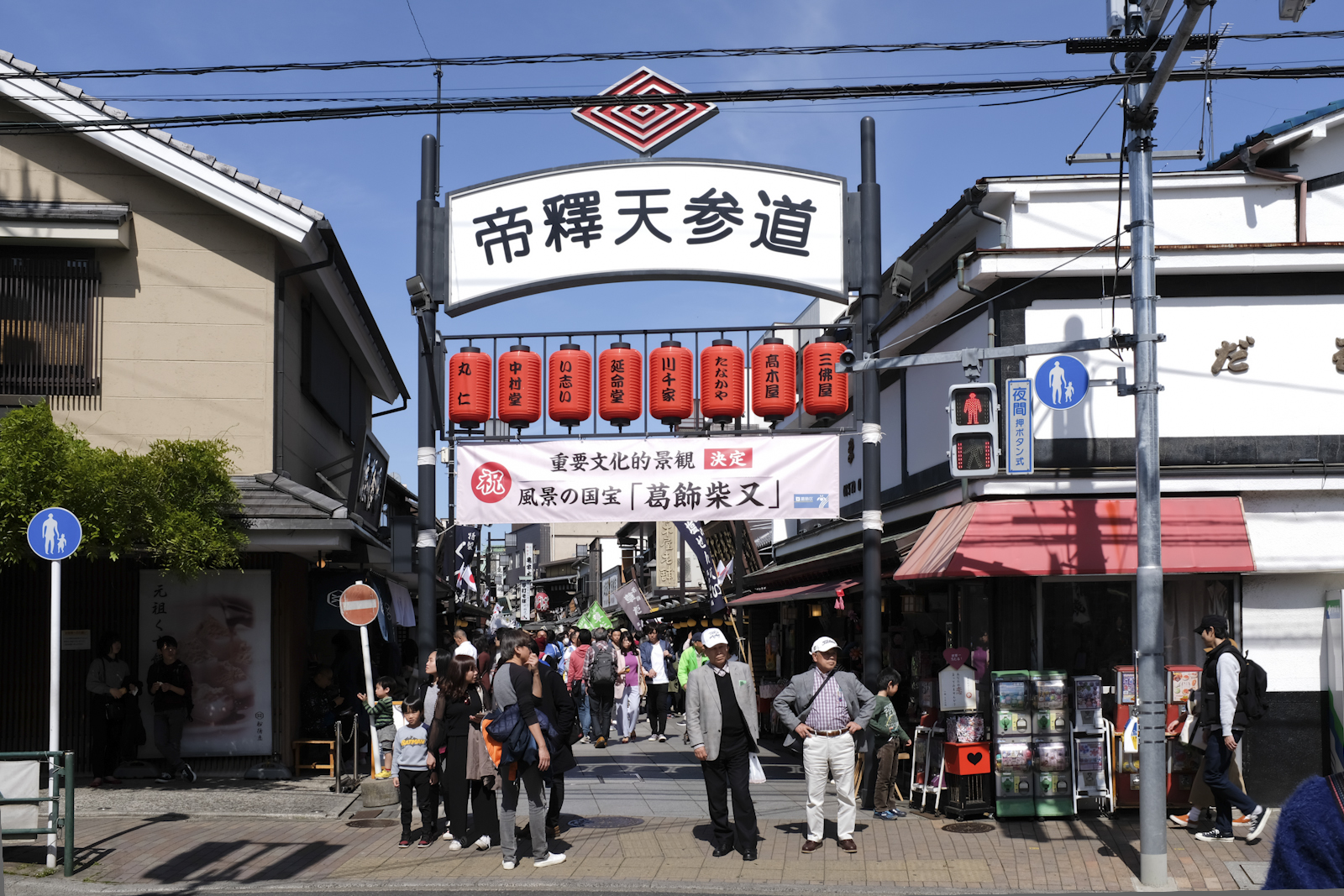
Beyond the Tora-san statue, you’ll find Taishakuten Sando, Shibamata’s main shopping street. Like every trip in Japan, this one is all about food.
The street is lined with food stalls selling traditional snacks like hand-grilled senbei (rice crackers), dorayaki (pancakes filled with sweet azuki bean paste), kuzu-mochi (a sicky rice cake made with arrowroot powder), and the local specialty, kusa-dango. Dango are round balls of mochi — sticky rice cakes — but here they’re made with kusa, Japanese mugwort, a bitter herb that used to grow in the area. Kusa-dango are served with anko (red bean paste) to tame the bitterness and make them sweet, and they are highly recommended.

There’s even a shop selling traditional candies, the sort of thing my wife ate when she was a child. There’s something for everyone, even if you’re not fond of fish-flavoured snacks. I found candy that tastes like ramen noodles. Pair that up with some beer-flavoured candy, and you’ve got yourself a meal.

After you’ve fortified yourself with a snack, or with several snacks if you’re traveling with Japanese friends, proceed to the end of the street, and Taishakuten Temple.
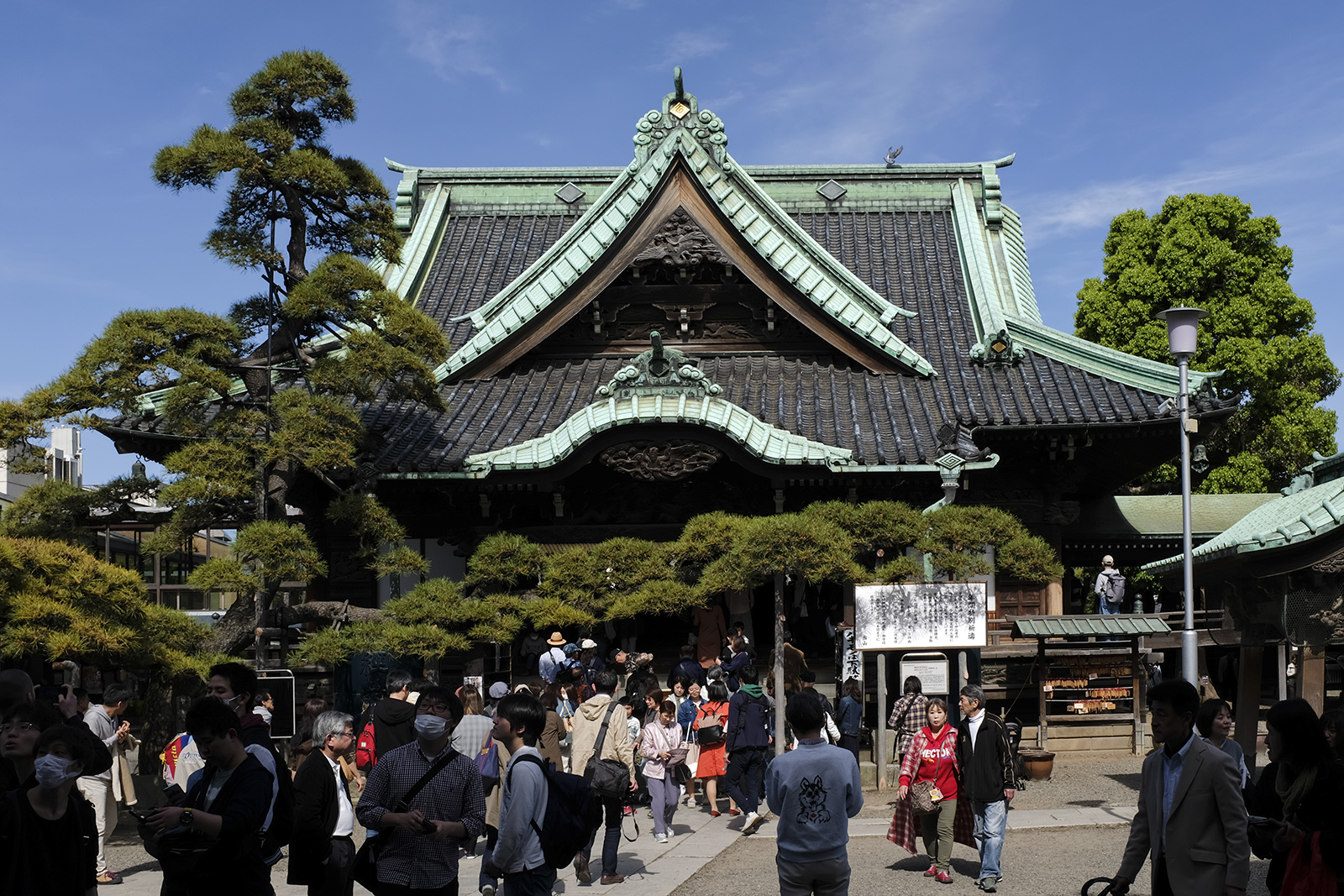
Pass beneath the rather impressive Nitenmon Gate and go inside the temple grounds. This is a Buddhist temple of the Nichiren school. It’s worth the small entry fee to go inside the main building, where you can walk around the entire perimeter on raised walkways to admire the elaborate wood carvings depicting the Lotus Sutra, made between 1922 and 1934.
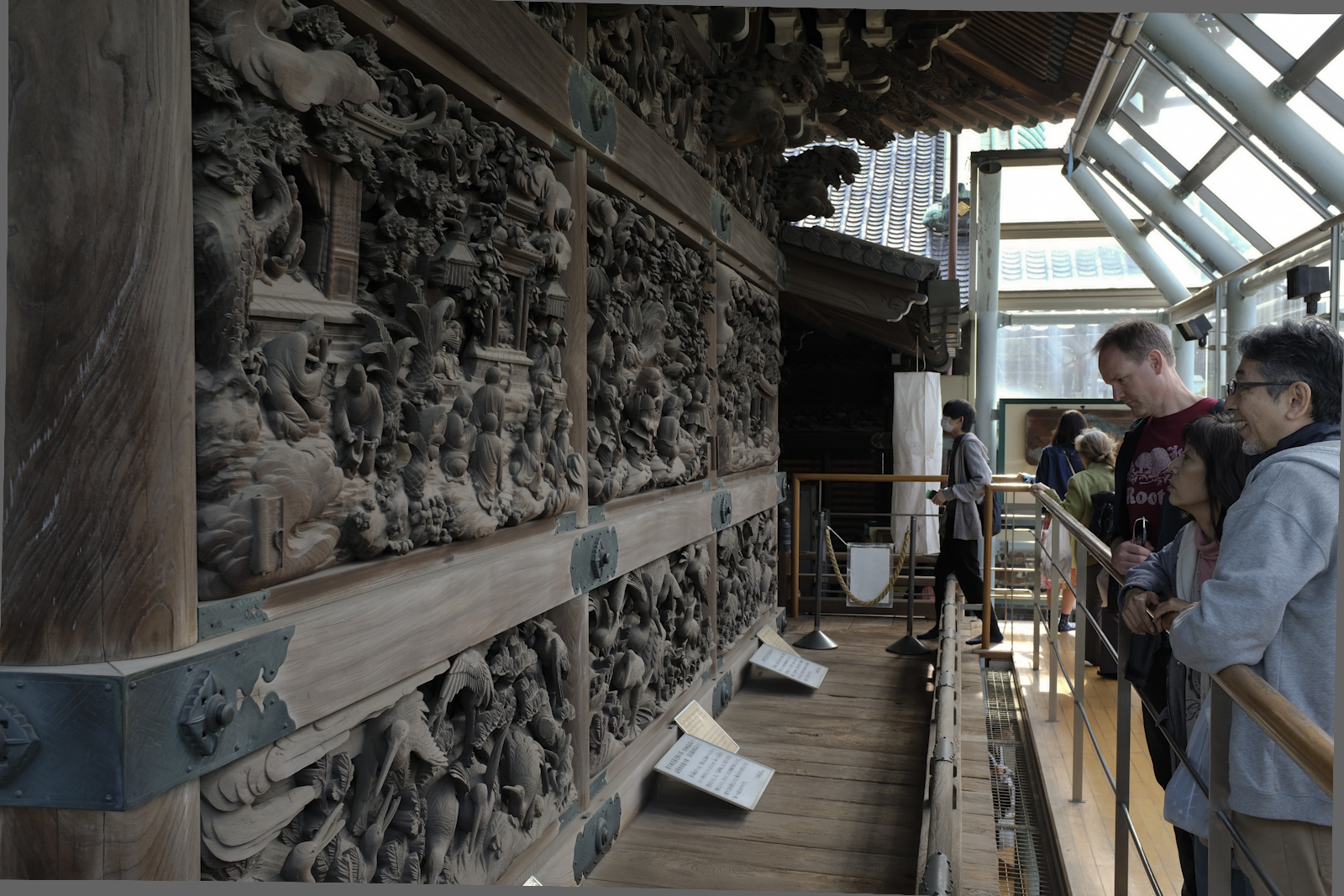
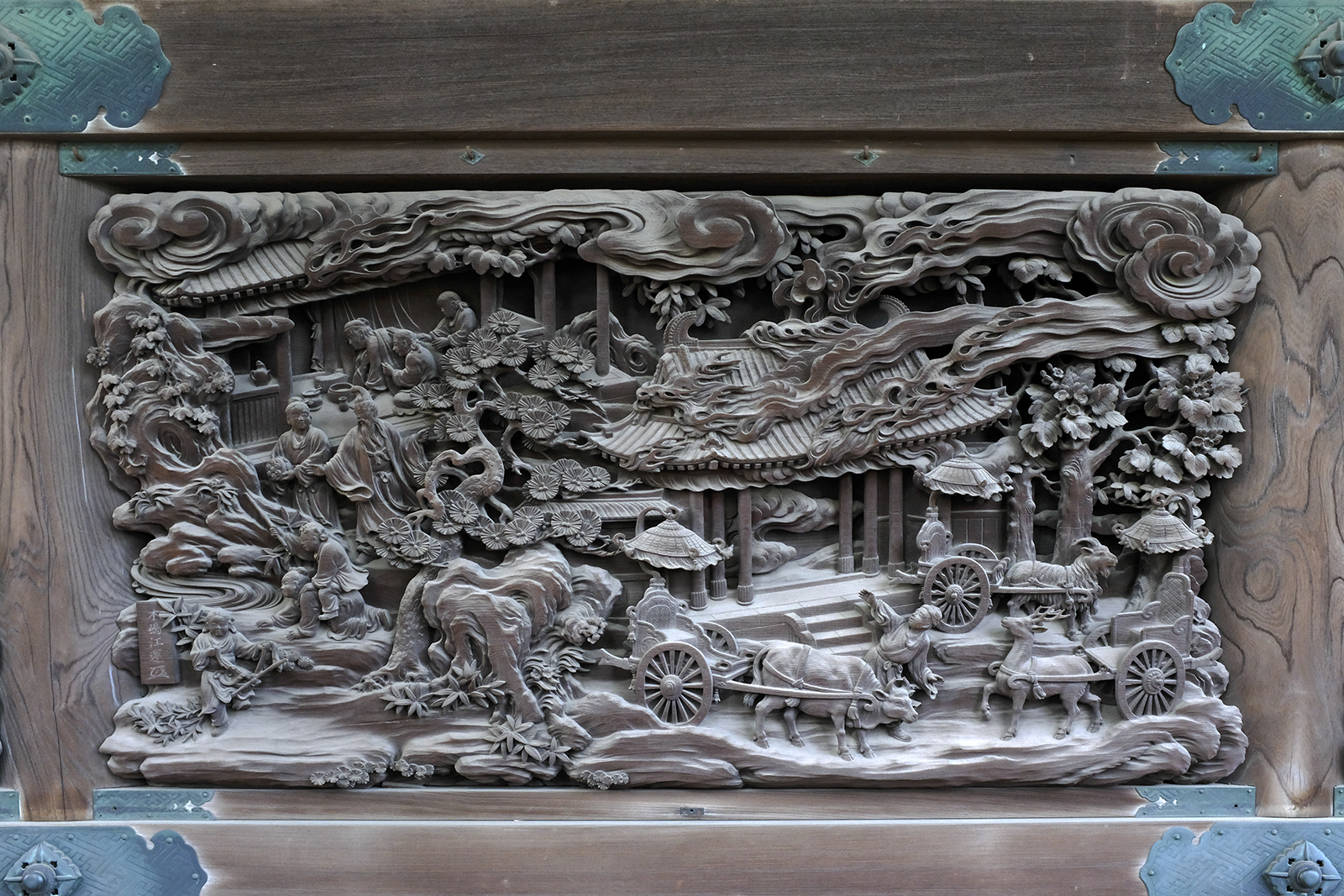

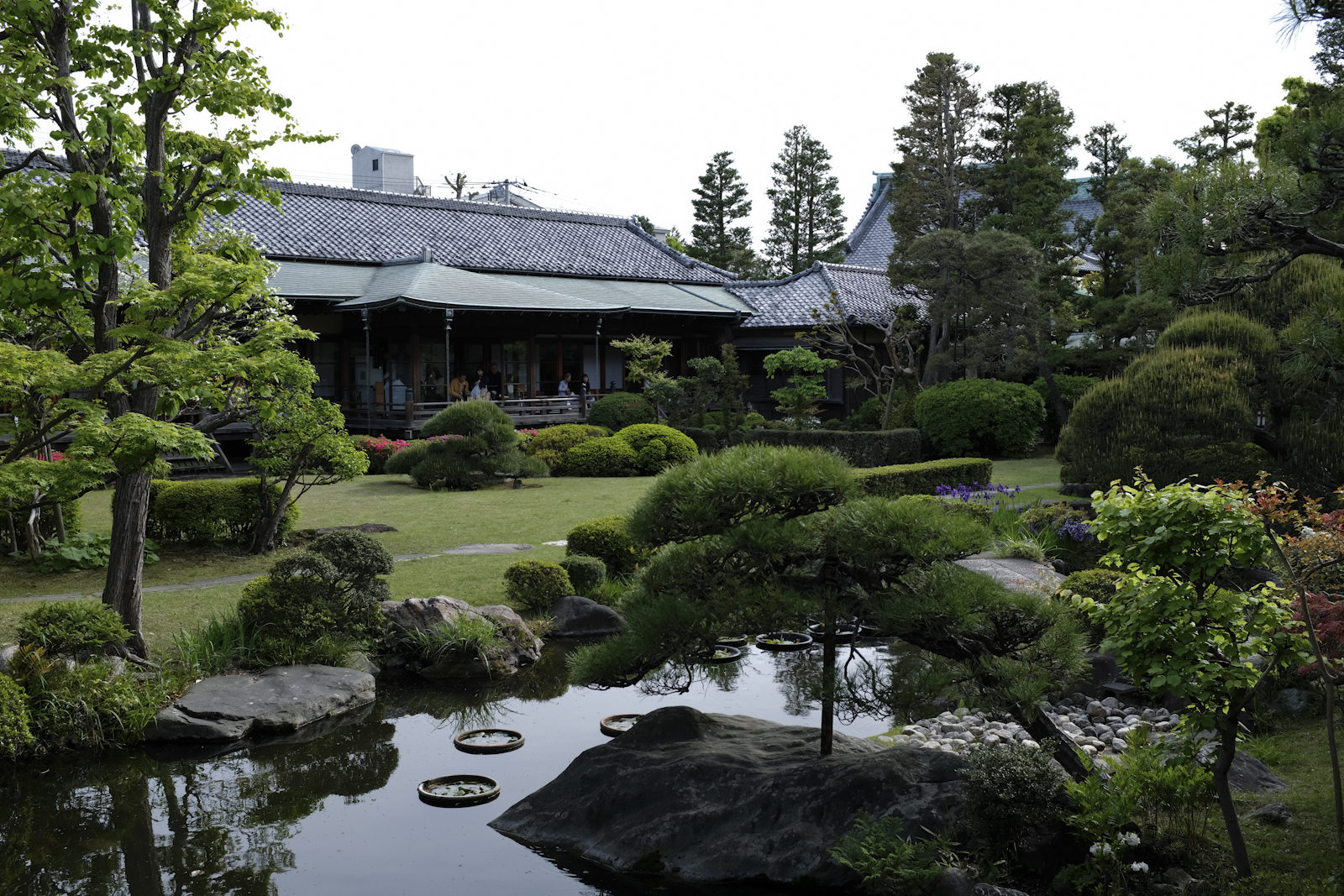
After exploring the temple and its gardens, walk back down the Taishakuten Sando and look for a place where you can enjoy Shibamata’s other speciality: unaju (grilled river eel over rice, served in a lacquered box).
And then take a walk, like we did, down to the banks of the Edo River, where children play baseball, families stroll, and the river flows on towards the city once known as Edo, where it empties into Tokyo Bay.
Photos ©Tomoko Goto 2019

Get your FREE Guide to Creating Unique Travel Experiences today! And get out there and live your dreams...
